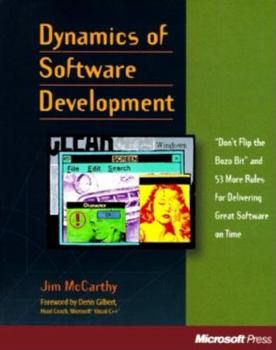Dynamics of Software Development
Shipping great software can be done, insists McCarthy, and charts, in five sections, the progress from initial design to successful product. McCarthy is a software industry veteran and the director of... This description may be from another edition of this product.
Format:Paperback
Language:English
ISBN:1556158238
ISBN13:9781556158230
Release Date:July 1995
Publisher:Microsoft Press
Length:184 Pages
Weight:0.95 lbs.
Dimensions:0.7" x 7.4" x 9.2"













